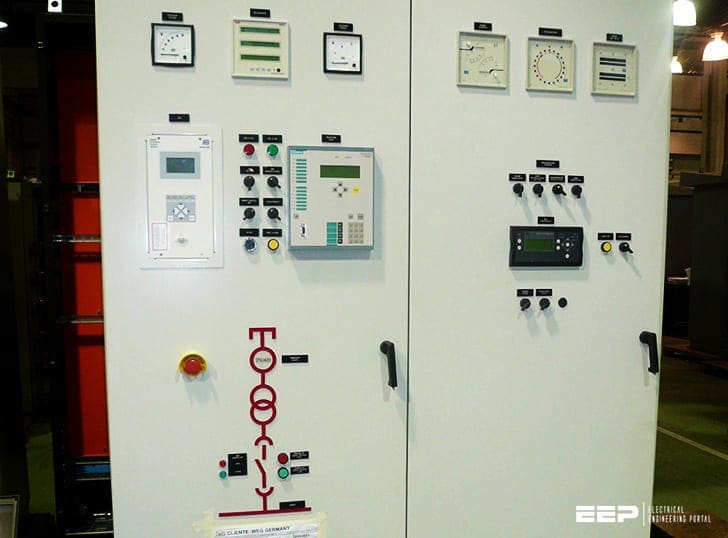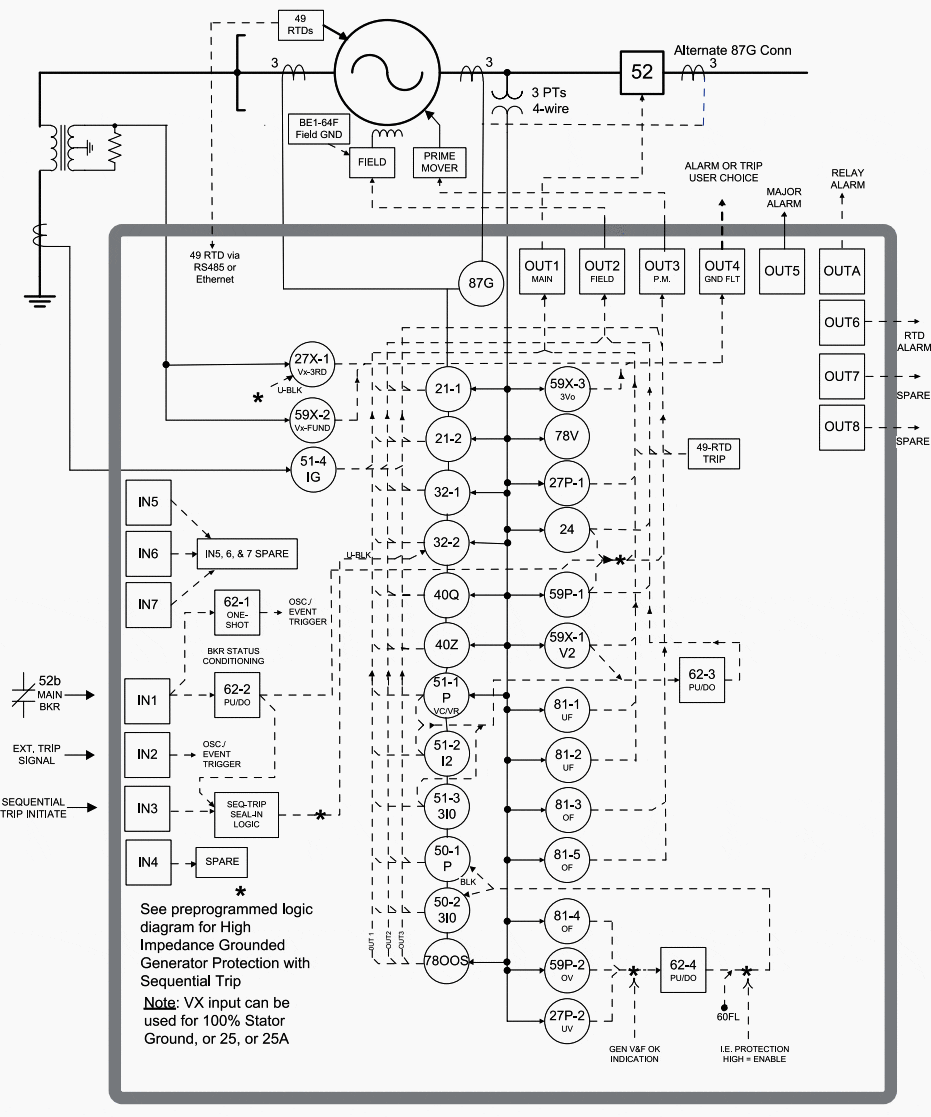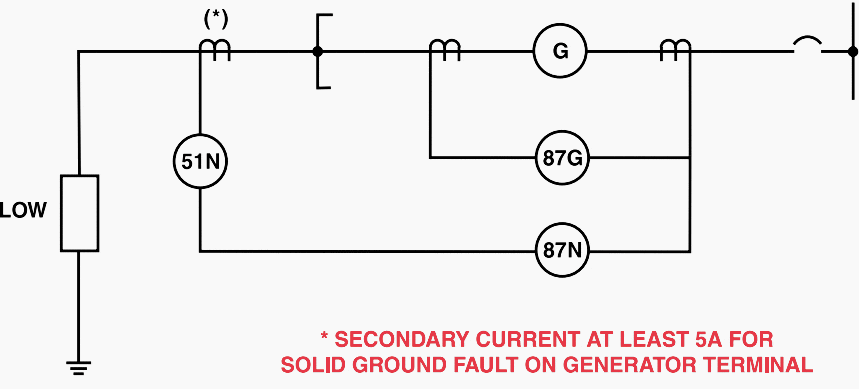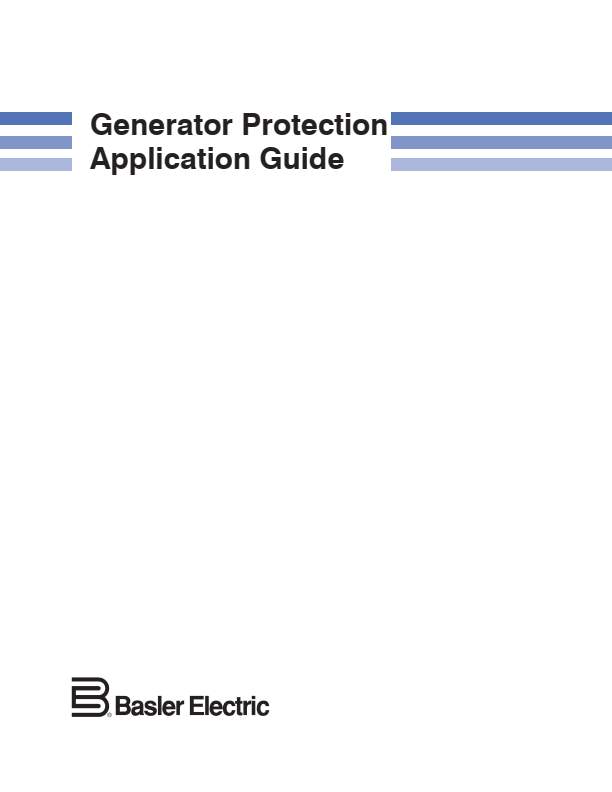Selecting relays to protect generator
Protection engineers must balance the expense of applying a particular relay or relay system against the consequences of losing a generator. The total loss of a generator may not be catastrophic if it represents a small percentage of the investment in an installation. However, the impact on service reliability and upset to loads supplied must be considered.

Damage to and loss of product in continuous processes can represent the dominating concern rather than the generator unit.
Accordingly, there is no standard solution based on the MW rating. However, it is rather expected that a 500 kW, 480 V, standby reciprocating engine will have less protection than a 400 MW base load steam turbine unit.
This guide simplifies the process of selecting relays by describing how to protect against each type of external and internal fault or abnormal condition. Then, suggestions are made for what is considered to be minimum protection as a baseline.
After establishing the baseline, additional protection, as described in the section on Integrated Application Examples, may be added.

The subjects covered in this guide are as follows:
- Ground Fault (50/51-G/N, 27/59, 59N, 27-3N, 87N)
- Phase Fault (51, 51V, 87G)
- Backup Remote Fault Detection (51V, 21)
- Reverse Power (32)
- Loss of Field (40Q and 40Z)
- Thermal (49RTD)
- Fuse Loss (60)
- Overexcitation and Over/Undervoltage (24, 27/59)
- Inadvertent Energization (50/27)
- Negative-sequence Current and Voltage (46, 47)
- Off-Frequency Operation (81O/U/ROC)
- Sync Check (25) and Auto Synchronizing (25A)
- Out of Step (78OOS)
- Selective and Sequential Tripping
- Integrated Application Examples
- Application of BE1-11g Multifunction Relay System
- Typical Settings
Ground Fault Protection
The following information and examples cover three impedance levels of grounding: low-, medium- and high-impedance grounding.
A low-impedance grounded generator is a generator that has zero or minimal impedance applied at the wye neutral point so that, during a ground fault at the generator HV terminals, ground current from the generator is approximately equal to three-phase fault current.

A medium-impedance grounded generator is a generator that has substantial impedance applied at the wye neutral point so that, during a ground fault, a reduced but readily detectable level of ground current, typically 100-500 A, flows.
A high-impedance grounded generator is a generator with a large grounding impedance so that, during a ground fault, a nearly undetectable level of fault current flows, making ground fault monitoring with voltagebased (e.g., third-harmonic voltage monitoring and fundamental frequency neutral-voltageshift monitoring) protection necessary.
The location of the grounding, generator neutral(s) or transformer also influences the protection approach.
| Title: | Generator Protection Application Guide – Basler Electric |
| Format: | |
| Size: | 962 KB |
| Pages: | 28 |
| Download: | Right here | Video Courses | Membership | Download Updates |



I am interested in receiving more information about power generation and protection.
Really impressed!. Please how do I get premium membership and much more?